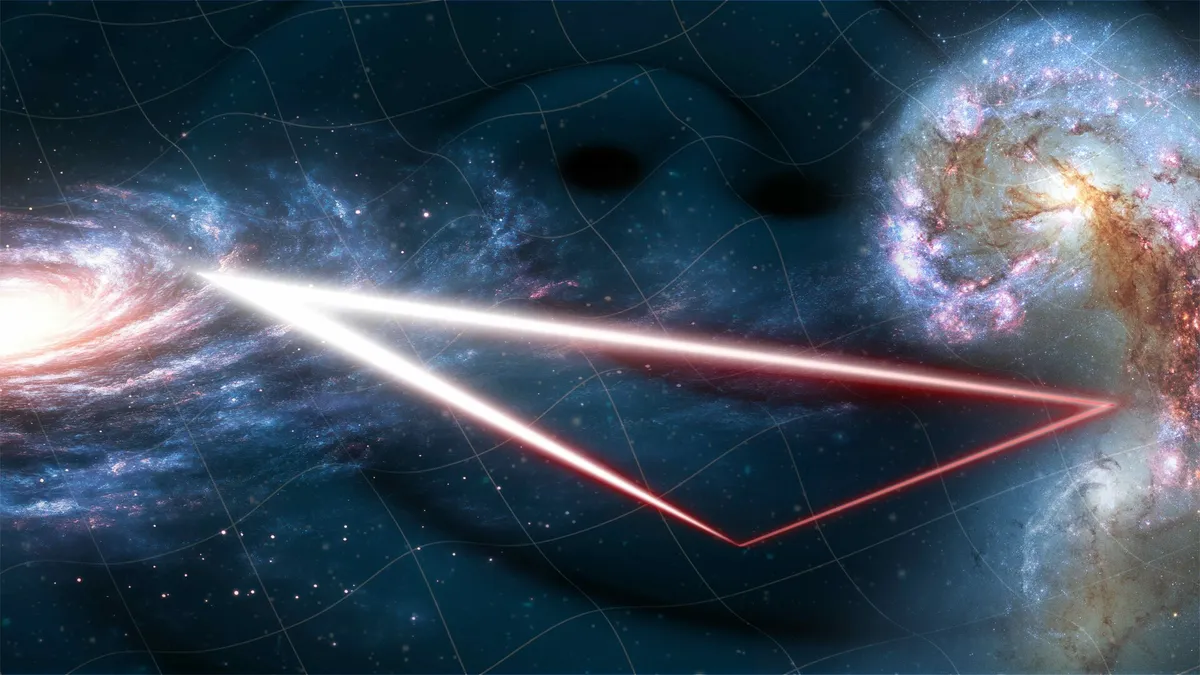
The signature event at the International Paris Air Show, held in France, marked a significant milestone in the industrial development of the LISA mission. In collaboration with the LISA team, OHB is set to finalize the spacecraft design and commence its construction. Chiara Pedersoli, CEO of OHB System AG, expressed pride in being entrusted by the European Space Agency (ESA) and the scientific community to implement this groundbreaking science mission. “We are immensely proud that ESA and the scientific community entrust us to implement this groundbreaking science mission. Together with our partners, we stand ready to bring LISA to life – pioneering our ability to ‘surf gravitational waves’ and enabling us to see our Universe in a new way,” she stated.
Prof. Carole Mundell, ESA’s Director of Science, shared her excitement about the contract signing, stating, “I’m delighted to celebrate the contract signing today with our partners at OHB who will lead on the implementation of this truly ambitious endeavor. LISA represents many years of pioneering technology developments, hope and belief from our scientific community, and steadfast support from our ESA member states.” She further emphasized that LISA, as the first space mission designed to capture gravitational waves, will open a new window on the dark Universe and test the known laws of physics to their extremes.
LISA, or the Laser Interferometer Space Antenna, is a large-class mission dedicated to detecting elusive ripples in spacetime. Positioned in space, LISA will capture gravitational waves at lower frequencies than what is currently possible from Earth, uncovering cosmic events that date back to the dawn of time. This groundbreaking mission aims to trace how massive black holes merge and grow over cosmic ages, explore the fundamental nature of gravity, and study the expansion rate of the Universe.
Within our galaxy, LISA is expected to provide new insights into the formation and evolution of tens of thousands of compact binary star systems, significantly advancing our understanding of stellar-origin black holes. The mission's design includes a constellation of three spacecraft that will operate in a triangular formation, trailing Earth in its orbit around the Sun. Each side of the equilateral triangle will extend 2.5 million kilometers, which is more than six times the distance from Earth to the Moon.
Undertaking the operation of three spacecraft at such vast distances presents unprecedented engineering challenges. The spacecraft will need to exchange laser beams across these extensive separations, a feat never attempted before. The launch of the three spacecraft is slated for 2035, utilizing an Ariane 6 rocket. Each spacecraft will carry a pair of solid gold-platinum cubes, known as test masses, which are slightly smaller than Rubik’s cubes and will float freely in specialized housings.
As gravitational waves pass through space, they will cause minute changes in the distances between the golden cubes across different spacecraft. The mission will track these tiny shifts using the highly sensitive technique of laser interferometry. This name reflects the core principle of the mission: shooting laser beams from one spacecraft to another and superimposing their signals to determine changes in the masses’ distances to an astonishing precision of a few billionths of a millimeter, or shifts smaller than the diameter of a helium atom, over a distance of 2.5 million kilometers.
In conclusion, the LISA mission promises to revolutionize our understanding of the Universe. With its innovative design and international collaboration, it positions Europe at the forefront of space technology and fundamental science.